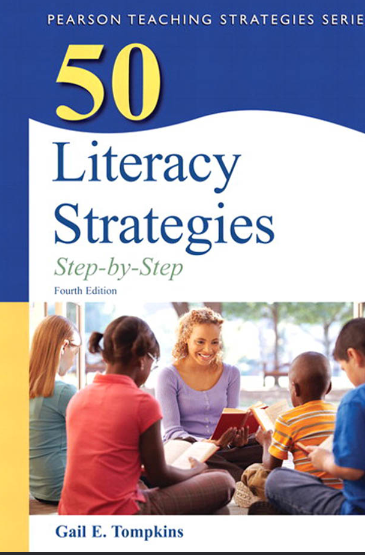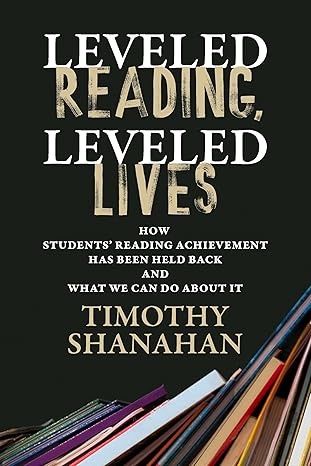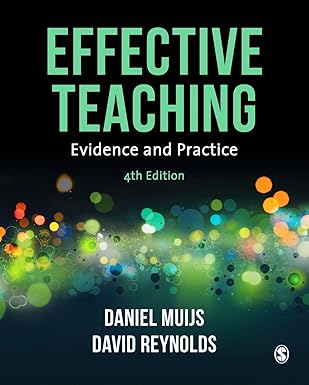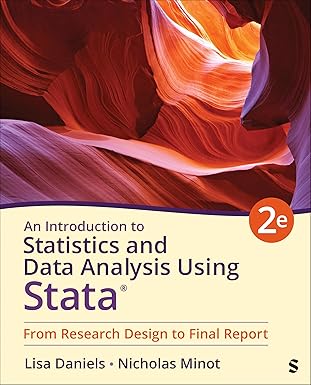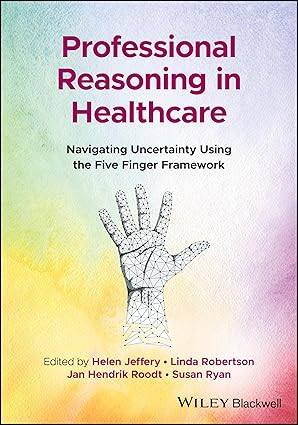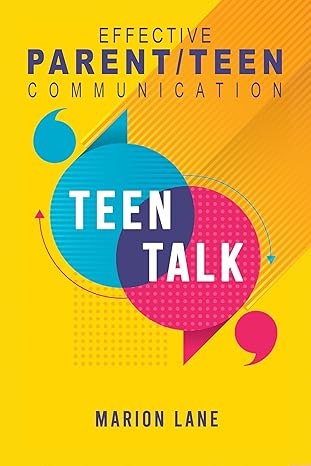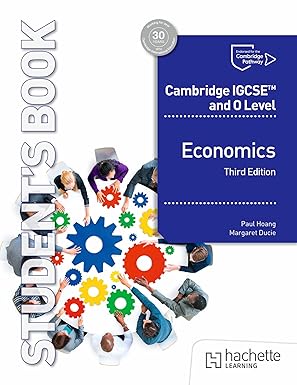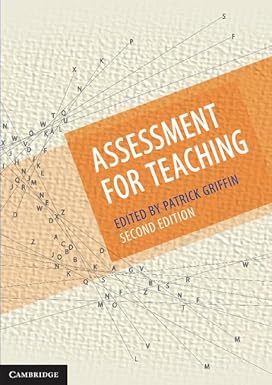Common Core State StandardS for engliSh language artS: “All About . . .” books This instructional strategy supports these Common Core State Standards for Reading: Informational Text and Writing: • Students read grade-appropriate informational texts. • Students share the results of research through writing. • Students write informative/explanatory texts. Students make important connections between reading and writing as they craft “All About . . .” books. 1 1 “All About . . .” Books instructional focus grade levels Young children write “All About . . .” books on familiar topics (Tompkins, 2012). They put together a booklet with four or five pages, write a sentence or two on each page, and add illustrations to elaborate the information presented in the text. Stu- dents read the book to the teacher, who helps them elaborate ideas and correct mechani- cal errors before they share from the author’s chair (see p. 10). As they gain experience writing books with one or two sentences per page, students can expand and elaborate the information they share on each page, gradually increasing the length to a paragraph. WhY Use This insTrUcTionAl sTrATegY This is one of the first types of books that many young children or other beginning writers make. The organization is simple, with one piece of information written and illustrated on each page. It’s a successful writing experience for both beginning writers and their teachers because it’s completed quickly—usually in a day or two—and easily. scaffolding english learners Making an “All About . . .” book is an excellent activity for English learners of any age who are novice writers. The book’s structure is easy to learn: They write a piece of informa- tion about a topic using a sentence or two on each page and add an illustration. Those students who are very artistic embellish their books with impressive, detailed illustrations that extend the information presented in the text. English learners can work individually, with a partner, or in a small group to write an “All About . . .” book to share what they’ve learned about a topic that interests them. Oral Language Comprehension PreK–Grade 2 Phonemic Awareness/Phonics Writing Grades 3–5 Fluency Spelling Grades 6–8 Vocabulary Content Areas English Learners ✓ ✓ ✓ ✓ 2 “All About . . .” Books hoW To Use This insTrUcTionAl sTrATegY This writing activity fits easily into prekindergarten through second grade classrooms because most students can write “All About . . .” books independently once they’re famil- iar with the procedure. Teachers follow these steps: 1 Choose a topic for the book. Students choose a topic that’s familiar or interesting to them, or teachers suggest a broad topic related to a thematic unit the class is studying. 2 Gather and organize ideas for writing. Students brainstorm possible ideas for what they’ll write on each page, or they draw pictures for each page. 3 Write the book. Students write a sentence or two on each page to accompany pictures they’ve drawn. 4 Read the book with the teacher. Students conference with the teacher, reread their books, and make revising and editing changes as necessary. Students often add more words to what they’ve written, correct spelling errors, and insert necessary punctuation marks. Sometimes teachers or students word process final copies after the conference, or they “publish” their books without recopying them. 5 Share the completed book with the class. Students sit in the author’s chair to read their completed books to classmates. Then classmates clap, offer congratulatory comments, and ask questions. Two Pages From a First Grader’s “Seeds” Book “All About . . .” Books 3 When To Use This insTrUcTionAl sTrATegY Students often make “All About . . .” books as part of thematic units and during writing workshop. During thematic units, students write these books to share what they’re learning. The figure on the previous page shows two pages from a first grader’s “Seeds” book. This child wrote about information he learned during the unit, and he spelled most of the words correctly by locating them on a word wall (see p. 156) posted in the classroom. The few remaining errors were corrected during a conference with the teacher. During writing workshop, students choose their own topics for these books, writing about their families, pets, vacations, hobbies, and other experiences. For example, a first grader wrote this book about “My Precious Cat” during writing workshop: Page 1: My cat is named Meow because she meows and meows all the time. Page 2: I feed Meow Cat Chow in her dish every morning. Page 3: Meow got lost once for 6 days but then she came home. She was all dirty but she was safe. Page 4: Meow is mostly all black but she has white on her toes. Her fur is very silky. Page 5: Meow sleeps on my bed and she licks me with her scratchy tongue. This student wrote about a familiar topic, and on each page of her book she focused on a different piece of information about her cat. Differentiating instruction “All About . . .” books are very adaptable. Teachers individualize instruction to meet students’ needs using these adaptations: • Students create wordless books using drawings with captions and diagrams with labels. • Students work with partners or in small groups to complete their pages. • Students draw a picture on each page and dictate an explanatory sentence that the teacher writes underneath using the Language Experience Approach (see p. 64). • Students add a visual component by writing labels for their drawings to highlight important information. • Students write longer texts to accompany their illustrations, often a paragraph or two in length. Through these adaptations, students create books successfully and apply what they’re learning about written language. referenCeS Tompkins, G. E. (2012). Teaching writing: Balancing process and product (6th ed.). Boston: Pearson. 4 Common Core State StandardS for engliSh language artS: AlphAbet books This instructional strategy supports these Common Core State Standards for Writing and Language: • Students learn grade-appropriate vocabulary related to novels and thematic units. • Students write informative texts to explain the meaning of key vocabulary. Students deepen their understanding of academic vocabulary as they make alphabet books. 2 Alphabet Books instructional focus Oral Language Comprehension Phonemic Awareness/Phonics Writing Fluency Spelling Vocabulary Content Areas ✓ ✓ ✓ grade levels PreK–Grade 2 Grades 3–5 Grades 6–8 English Learners ✓ ✓ ✓ You may be familiar with the alphabet books that young children make with a scrapbook-like collection of words and pictures representing each letter, but older students create more sophisticated alphabet books using technical vocabulary words to share what they’re learning during a thematic unit (Evers, Lang, & Smith, 2009). They construct 26-page alphabet books with one page featuring each letter, much like the alpha- bet trade books published for older children, including D Is for Dragon Dance (Compestine, 2006), America: A Patriotic Primer (Cheney, 2002), Jazz ABZ (Marsalis & Schaap, 2005), and The Accidental Zucchini: An Unexpected Alphabet (Grover, 1997). Turn to the Booklist on the next page for additional books. The words chosen for less common letters, such as e, k, q, u, and y, are especially interesting to check. Students choose vocabulary words beginning with each letter of the alphabet, write explanations describing how the word relates to the topic, and add illustrations to extend the text. Then the pages are compiled and bound into a book, and these books are added to the classroom library for students to read.
چکیده فارسی
استانداردهای اصلی دولتی مشترک برای هنرهای زبان انگلیسی: «همه چیز درباره . . " کتابها این استراتژی آموزشی از این استانداردهای اصلی اصلی برای خواندن پشتیبانی میکند: متن اطلاعاتی و نوشتن: • دانشآموزان متون اطلاعاتی مناسب کلاس را میخوانند. • دانش آموزان نتایج تحقیق را از طریق نوشتن به اشتراک می گذارند. • دانش آموزان متون آموزنده/توضیح می نویسند. دانشآموزان ارتباط مهمی بین خواندن و نوشتن برقرار میکنند، زیرا «همه چیز درباره . . " کتاب ها 1 1 «همه چیز درباره . . " سطح کلاس تمرکز آموزشی کتابها کودکان خردسال می نویسند «همه چیز درباره . . " کتاب هایی در مورد موضوعات آشنا (تامپکینز، 2012). آنها یک کتابچه چهار یا پنج صفحه ای را کنار هم می گذارند، در هر صفحه یک یا دو جمله می نویسند و برای توضیح بیشتر اطلاعات ارائه شده در متن، تصاویری اضافه می کنند. دانشآموزان کتاب را برای معلم میخوانند، که به آنها کمک میکند تا ایدهها را بسط دهند و خطاهای مکانیکی را قبل از اینکه از روی صندلی نویسنده به اشتراک بگذارند، تصحیح کنند (به صفحه 10 مراجعه کنید). وقتی دانشآموزان تجربه نوشتن کتاب با یک یا دو جمله در هر صفحه را به دست میآورند، میتوانند اطلاعاتی را که در هر صفحه به اشتراک میگذارند، گسترش داده و به تفصیل بسط دهند و به تدریج طول آن را به یک پاراگراف افزایش دهند. چرا از این استراتژی آموزنده استفاده کنید این یکی از اولین نوع کتاب هایی است که بسیاری از کودکان خردسال یا سایر نویسندگان مبتدی می سازند. سازماندهی ساده است و در هر صفحه یک قسمت از اطلاعات نوشته شده و نشان داده شده است. این یک تجربه نوشتن موفق هم برای نویسندگان مبتدی و هم برای معلمان آنها است زیرا به سرعت - معمولاً در یک یا دو روز - و به راحتی تکمیل می شود. داربست زبان آموزان انگلیسی ساختن «همه چیز درباره . . " کتاب یک فعالیت عالی برای زبان آموزان انگلیسی در هر سنی است که نویسندگان تازه کار هستند. ساختار کتاب به راحتی قابل یادگیری است: آنها با استفاده از یک یا دو جمله در هر صفحه، اطلاعاتی درباره یک موضوع می نویسند و یک تصویر اضافه می کنند. آن دسته از دانش آموزانی که بسیار هنرمندانه هستند، کتاب های خود را با تصاویر چشمگیر و دقیقی که اطلاعات ارائه شده در متن را گسترش می دهد، تزئین می کنند. زبان آموزان انگلیسی می توانند به صورت انفرادی، با یک شریک، یا در یک گروه کوچک برای نوشتن «همه چیز درباره . . " کتابی برای به اشتراک گذاشتن آنچه که در مورد موضوعی که به آنها علاقه دارد، یاد گرفته اند. درک زبان شفاهی PreK–Grade 2 Phonemic Awareness/Phonics Writing کلاس های 3-5 املای روان کلاس های 6-8 حوزه های محتوایی واژگان زبان آموزان انگلیسی ✓ ✓ ✓ ✓ 2 «همه چیز درباره . . " کتاب نحوه استفاده از این روش آموزشی این فعالیت نوشتاری به راحتی در کلاس های کلاس دوم پیش از مهدکودک جای می گیرد زیرا اکثر دانش آموزان می توانند «همه چیز درباره . . " به محض اینکه با این روش آشنا شدند، به طور مستقل کتابها را تهیه کنند. معلمان این مراحل را دنبال می کنند: 1 موضوعی را برای کتاب انتخاب کنید. دانشآموزان موضوعی را انتخاب میکنند که برای آنها آشنا یا جالب است، یا معلمان موضوع گستردهای مرتبط با یک واحد موضوعی را که کلاس در حال مطالعه است، پیشنهاد میکنند. 2 جمع آوری و سازماندهی ایده ها برای نوشتن. دانشآموزان ایدههای احتمالی را برای آنچه در هر صفحه مینویسند طوفان فکری میکنند، یا برای هر صفحه نقاشی میکشند. 3 کتاب را بنویسید. دانش آموزان در هر صفحه یک یا دو جمله می نویسند تا تصاویری را که کشیده اند همراه کنند. 4 کتاب را با معلم بخوانید. دانشآموزان با معلم کنفرانس میکنند، کتابهایشان را بازخوانی میکنند، و در صورت لزوم، تغییراتی را اصلاح و ویرایش میکنند. دانشآموزان اغلب کلمات بیشتری را به آنچه نوشتهاند اضافه میکنند، غلطهای املایی را تصحیح میکنند و علائم نگارشی لازم را وارد میکنند. گاهی اوقات معلمان یا دانشآموزان نسخههای نهایی را پس از کنفرانس پردازش کلمهای میکنند، یا کتابهای خود را بدون نسخهبرداری مجدد «انتشار» میکنند. 5 کتاب تکمیل شده را با کلاس به اشتراک بگذارید. دانش آموزان روی صندلی نویسنده می نشینند تا کتاب های تکمیل شده خود را برای همکلاسی ها بخوانند. سپس همکلاسی ها کف می زنند، کامنت های تبریک می گویند و سؤال می پرسند. دو صفحه از کتاب "دانه ها" یک کلاس اولی "همه چیز درباره . . " کتابهای 3 زمان استفاده از این راهبرد آموزشی دانشآموزان اغلب «همه چیز درباره . . " کتاب به عنوان بخشی از واحدهای موضوعی و در طول کارگاه نگارش. در طول واحدهای موضوعی، دانش آموزان این کتاب ها را می نویسند تا آنچه را که می آموزند به اشتراک بگذارند. شکل صفحه قبل دو صفحه از کتاب "دانه ها" دانش آموز کلاس اولی را نشان می دهد. این کودک در مورد اطلاعاتی که در طول دوره یاد گرفته بود نوشت و با قرار دادن آنها روی دیوار کلمه (به صفحه 156) که در کلاس درس گذاشته شده بود، املای صحیح بسیاری از کلمات را نوشت. چند خطای باقیمانده در طی یک کنفرانس با معلم اصلاح شد. در طول کارگاه نوشتن، دانشآموزان موضوعات خود را برای این کتابها انتخاب میکنند و درباره خانواده، حیوانات خانگی، تعطیلات، سرگرمیها و سایر تجربیات مینویسند. به عنوان مثال، یک دانش آموز کلاس اولی این کتاب را در مورد "گربه گرانبهای من" در کارگاه نوشتن نوشت: صفحه 1: گربه من میو نامیده می شود زیرا او همیشه میو و میو می کند. صفحه 2: من هر روز صبح به میو گربه چاو در ظرف غذایش می دهم. صفحه 3: میو یک بار به مدت 6 روز گم شد اما بعد به خانه آمد. او همه کثیف بود اما در امان بود. صفحه 4: میو اکثراً سیاه است اما روی انگشتانش سفید است. خز او بسیار ابریشمی است. صفحه 5: میو روی تخت من می خوابد و با زبان خراشیده اش مرا می لیسد. این دانش آموز در مورد موضوعی آشنا نوشت و در هر صفحه از کتابش بر روی اطلاعات متفاوتی درباره گربه اش تمرکز کرد. دستورالعمل متمایز کننده «همه چیز درباره . . " کتاب ها بسیار سازگار هستند. معلمان با استفاده از این انطباقها، دستورالعملها را برای برآوردن نیازهای دانشآموزان شخصیسازی میکنند: • دانشآموزان با استفاده از نقاشیهایی با شرح و نمودارهایی با برچسب، کتابهای بدون کلمه ایجاد میکنند. • دانش آموزان با شرکا یا در گروه های کوچک برای تکمیل صفحات خود کار می کنند. • دانش آموزان در هر صفحه یک تصویر می کشند و یک جمله توضیحی که معلم زیر آن با استفاده از رویکرد تجربه زبان می نویسد دیکته می کنند (به صفحه 64 مراجعه کنید). • دانش آموزان با نوشتن برچسب برای نقاشی های خود یک جزء بصری اضافه می کنند تا اطلاعات مهم را برجسته کنند. • دانش آموزان متن های طولانی تری را به همراه تصاویر خود می نویسند که اغلب یک یا دو پاراگراف است. از طریق این سازگاریها، دانشآموزان کتابهایی را با موفقیت ایجاد میکنند و آنچه را که در مورد زبان نوشتاری میآموزند به کار میگیرند. مرجع تامپکینز، G. E. (2012). آموزش نوشتن: ایجاد تعادل بین فرآیند و محصول (ویرایش ششم). بوستون: پیرسون. 4 استانداردهای دولتی مرکزی مشترک برای هنرهای زبان انگلیسی: کتاب های الفابت این استراتژی آموزشی از این استانداردهای اصلی اصلی برای نوشتن و زبان پشتیبانی می کند: • دانش آموزان واژگان متناسب با نمره مربوط به رمان ها و واحدهای موضوعی را یاد می گیرند. • دانش آموزان متون آموزنده را برای توضیح معنای واژگان کلیدی می نویسند. دانشآموزان با ساختن کتابهای الفبا، درک خود را از واژگان دانشگاهی عمیقتر میکنند. 2 کتاب حروف الفبا تمرکز آموزشی درک زبان شفاهی آگاهی آوایی/آواشناسی نوشتن روان املا واژگان حوزه های محتوایی ✓ ✓ ✓ سطوح پایه PreK–Grade 2 کلاس 3–5 کلاس 6–8 انگلیسی زبان آموزان ✓ ✓ ممکن است با کتاب الفا آشنا باشید ✓ کودکان با مجموعهای مانند دفترچه از کلمات و تصاویری که هر حرف را نشان میدهند، میسازند، اما دانشآموزان بزرگتر با استفاده از واژههای واژگان فنی، کتابهای الفبای پیچیدهتری ایجاد میکنند تا آنچه را که در طول یک واحد موضوعی یاد میگیرند به اشتراک بگذارند (اورس، لانگ و اسمیت، 2009). آنها کتابهای الفبای 26 صفحهای را با یک صفحه حاوی هر حرف میسازند، دقیقاً مانند کتابهای تجارت الفبا که برای کودکان بزرگتر منتشر شده است، از جمله D Is for Dragon Dance (Compestine, 2006)، America: A Patriotic Primer (Cheney, 2002). جاز ABZ (مارسالیس و شاپ، 2005)، و کدو سبز تصادفی: الفبای غیرمنتظره (گروور، 1997). برای کتابهای بیشتر به فهرست کتاب در صفحه بعد مراجعه کنید. کلماتی که برای حروف کمتر رایج مانند e، k، q، u و y انتخاب میشوند، برای بررسی بسیار جالب هستند. دانشآموزان لغات واژگانی را انتخاب میکنند که با هر حرف الفبا شروع میشوند، توضیحاتی مینویسند که نحوه ارتباط کلمه با موضوع را توصیف میکند، و تصاویری را برای گسترش متن اضافه میکنند. سپس صفحات گردآوری شده و در یک کتاب صحافی میشوند و این کتابها برای خواندن دانشآموزان به کتابخانه کلاس اضافه میشوند.
ادامه ...
بستن ...
Vice President, Editor-in-Chief: Aurora Martínez Ramos
Executive Development Editor: Hope Madden
Editorial Assistant: Michelle Hochberg
Executive Marketing Manager: Krista Clark
Production Editor: Janet Domingo
Editorial Production Service: Cenveo Publisher Services
Manufacturing Buyer: Megan Cochran
Electronic Composition: Cenveo Publisher Services
Interior Design: Cenveo Publisher Services
Cover Designer: Diane Lorenzo
Credits and acknowledgments borrowed from other sources and reproduced, with permission, in this textbook appear
on the appropriate page within text.
Copyright © 2013, 2009, 2004, 1998 by Pearson Education, Inc. All rights reserved. Manufactured in the United States
of America. This publication is protected by Copyright, and permission should be obtained from the publisher prior
to any prohibited reproduction, storage in a retrieval system, or transmission in any form or by any means, electronic,
mechanical, photocopying, recording, or likewise. To obtain permission(s) to use material from this work, please
submit a written request to Pearson Education, Inc., Permissions Department, One Lake Street, Upper Saddle River,
NJ, 07458, or you may fax your request to 201-236-3290.
Many of the designations by manufacturers and sellers to distinguish their products are claimed as trademarks. Where
those designations appear in this book, and the publisher was aware of a trademark claim, the designations have been
printed in initial caps or all caps.
Library of Congress Cataloging-in-Publication Data
Tompkins, Gail E.
50 literacy strategies : step by step / Gail E. Tompkins. -- 4th ed.
p. cm.
Includes bibliographical references and index.
ISBN 0-13-294491-X
1. Language arts (Elementary)--United States. 2. Language arts (Middle school)--United States. I. Title. II. Title:
Fifty literacy strategies.
LB1576.T653 2013
372.6--dc23
ادامه ...
بستن ...
